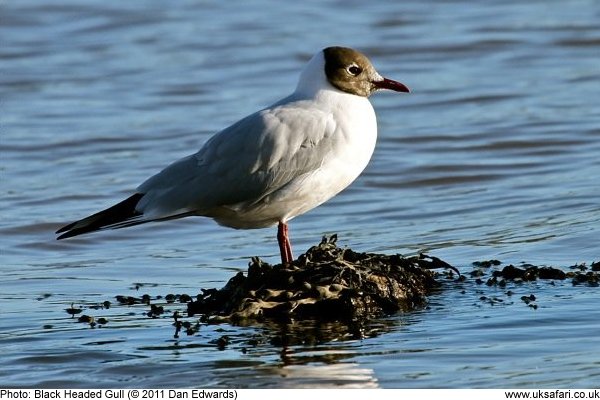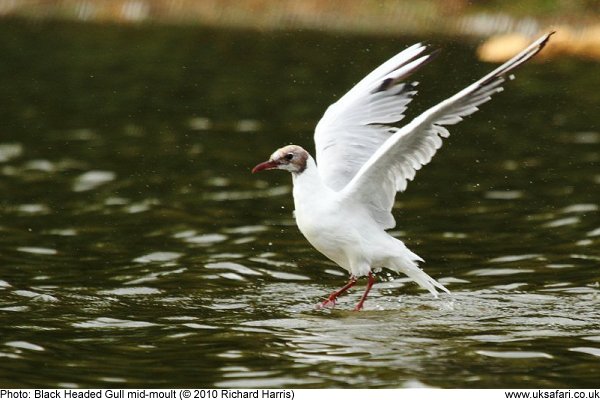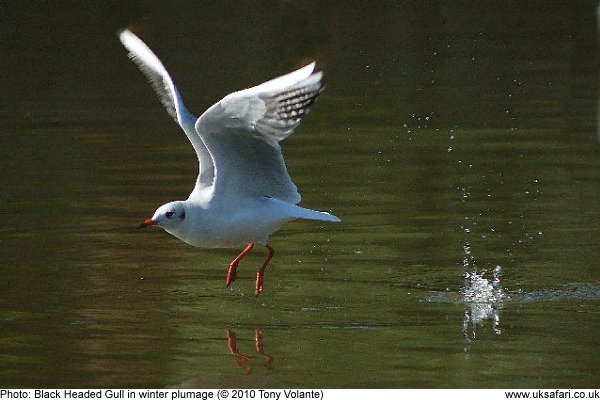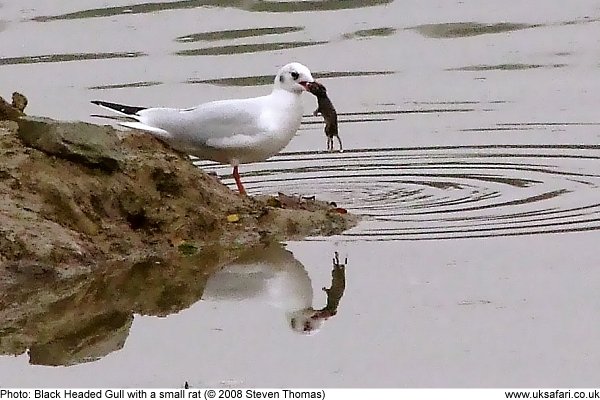 Quick Facts
Quick Facts
Scientific name: Chroicocephalus ridibundus (formerly Larus ridibundus)
Size: Approx 36cm, wingspan up to 110cm
Distribution: Found throughout the UK
Months seen: All year round
Life Span: Average 11 years (source BTO)
Habitat: Farmland, on or near water, and on landfill/waste sites
Food: Mostly worms and invertebrates but will also eat carrion
Special features: Black-headed gulls can be recognised in the summer months by their dark chocolate brown coloured 'hood'. The plumage on the back, and top of the wings, is grey, while the front and undersides of the wings are white, as are the leading edges of the wings (which differentiates them from other gulls). The tips of the wing feathers and the tips of the tail feathers are black. The legs are orange-red and the beak is red-brown.
In the winter months the plumage changes. The head becomes all white except for a small patch behind each eye.
Black-headed gulls are frequently be seen in late summer on farmland when the ground is being ploughed. The gulls congregate behind the farmers tractor, feeding on the freshly exposed worms and grubs.
They will also scavenge food from rubbish tips in winter when insects are harder to find.
 Related Pages
Related Pages

 Popular Pages
Popular Pages
Amphibians, Bats, Badgers, Beetles, Birds, Birds of Prey, Bumble Bees, Butterflies, Caterpillars, Creepy-Crawlies, Deadly Spiders, Dolphins, Dragonflies, E-Postcards, False Widow Spiders, Free Newsletter, Frogs, Fungi, Garden Spiders, Glow-Worms, Grey Squirrels, Hedgehogs, House Spiders, Ladybirds, Mammals, Marine Mammals, Moths, Owls, Reptiles, Spiders, Toads, Trees, Wildlife Hospitals
Copyright © 2020 G. Bradley UK Safari. All rights reserved | About Us | Links | Contributors


 Black Headed Gulls
Black Headed Gulls





